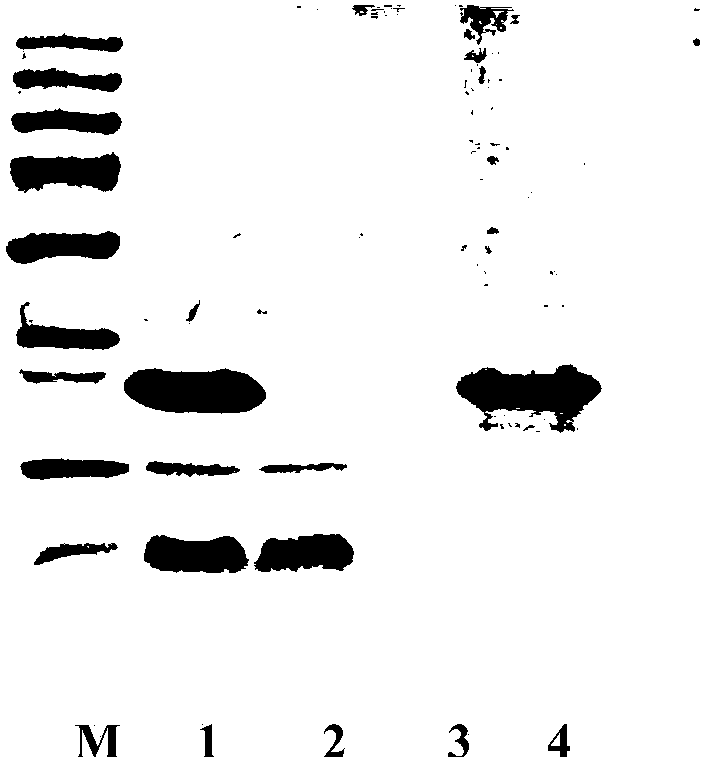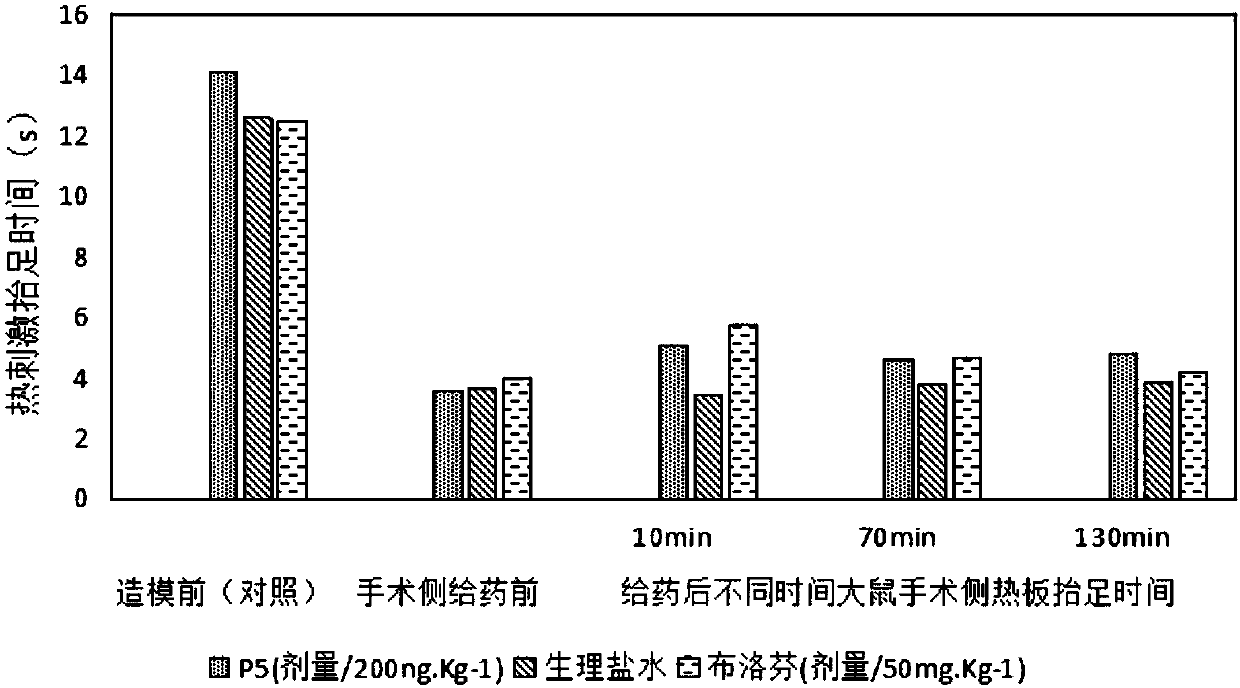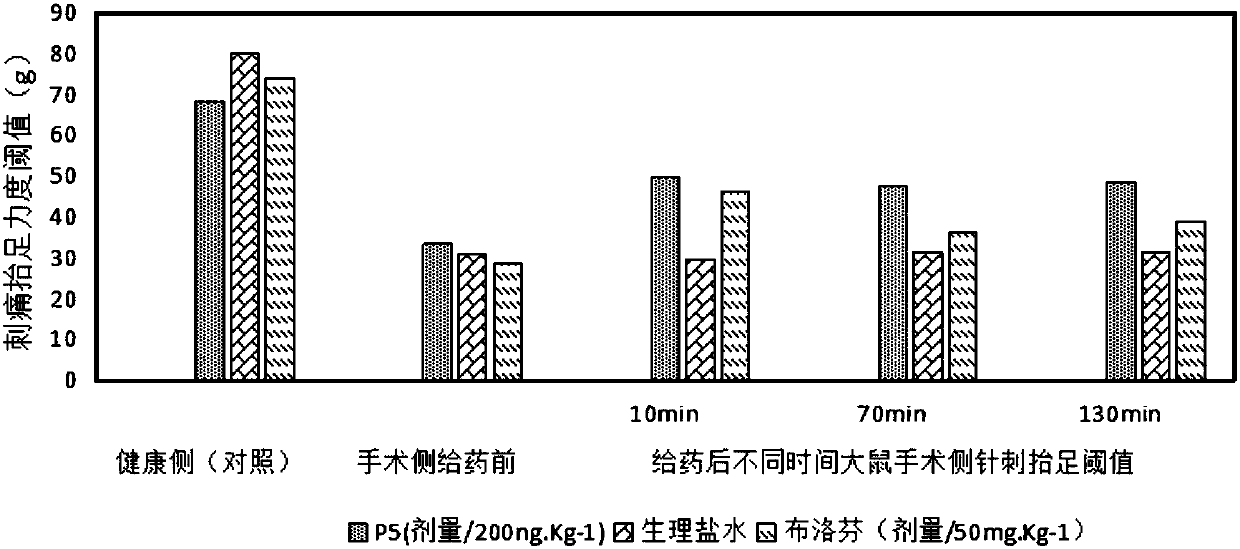Application of nervous excitation damage related polypeptide in preventing, relieving or treating pain
A technique of using and internalizing peptides, which is applied in the medical field and can solve problems such as weakening pain signals
- Summary
- Abstract
- Description
- Claims
- Application Information
AI Technical Summary
Problems solved by technology
Method used
Image
Examples
Embodiment 1
[0090] Example 1: Screening of Active Peptide Molecules
[0091] According to the reported research results, the Tat membrane-penetrating peptide YGRKKRRQRRR was selected and linked with different numbers of amino acids to form a peptide library. The peptide molecules in the peptide library interacted with the PDZ1 / 2 domains expressed and purified in vitro, and the peptides were initially screened according to the strength of the interaction.
[0092] The immobilized molecule (ligand) is PDZ1 / 2 protein, molecular weight: ~20kD, concentration: 2mg / ml; molecule (analyte) in mobile phase: polypeptide to be screened, molecular weight: ~2kD, concentration: 10mg / ml. Using Biacore 3000 instrument, CM5 chips were fixed. The electrophoresis buffer was PBS+0.005% Tween 20. Immobilization was performed using an amino-coupling method. The concentration of ligand was 10 μg / ml. Fixation buffer was 10 mM sodium acetate, pH 4.0. Fixed amount: 1400RU, fixed to Flow Cell 2. A flow rate of...
Embodiment 2
[0098] Example 2: Pull-down experiments detect the interaction between P5 and PDZ1 / 2 domains
[0099] To prove that P5 can interact with the PDZ1 / 2 domain, a Pull-down experiment was performed.
[0100] The column was equilibrated for 5 min with 100 μl of His beads and 1 ml of MCAC-0 buffer. Shake at 4°C. The mixture was centrifuged at 5000g for 1 min at 4°C, and the supernatant was discarded. Add 1 mg of PDZ1 / 2 protein to the mixture and make up to 1 ml with buffer. The mixture was rotated for 1 hour at 4°C. The mixture was centrifuged at 5000g for 1 min at 4°C, and the supernatant was discarded. Wash with 1 ml of MCAC-0 buffer 3 times, 5 minutes each time (washing with shaking at 4°C). Add 1 mg of P5 protein to the mixture and make up to 1 ml with buffer. The mixture was rotated for 2 hours at 4°C. The mixture was centrifuged at 5000g for 1 min at 4°C, and the supernatant was discarded. Wash with 1 ml of lysate for 3 times, 5 minutes each time (washing with shaking a...
Embodiment 3
[0102] Example 3: Detection of hot plate analgesic effect of P5 polypeptide
[0103] Experimental procedure
[0104] animal screening
[0105] Select 18 240-260 g male SD rats (purchased from Huafu Kangcheng Co., Ltd.) as experimental mice, and divide them into 3 groups with 6 rats in each group: one group with 0.2 μg / kg dose of P5 polypeptide, one group with normal saline One group of positive drug control group (ibuprofen, 50mg / kg) was applied to the hot plate experiment. Pre-experimental screening: Before hot plate experiment, put candidate rats on a 55°C hot plate. Rats that did not lick their hind feet or lift their feet within 30 seconds were not used in the experiment.
[0106] Animal model establishment
[0107] 4.0 Chromium catgut (purchased from Shandong Boda Medical Supplies Co., Ltd.) needs to be soaked in normal saline (purchased from Shijiazhuang No.4 Medicine Co., Ltd., H13023200) for 30 minutes in advance to soften. The middle part of the thigh of the rat w...
PUM
 Login to View More
Login to View More Abstract
Description
Claims
Application Information
 Login to View More
Login to View More - R&D
- Intellectual Property
- Life Sciences
- Materials
- Tech Scout
- Unparalleled Data Quality
- Higher Quality Content
- 60% Fewer Hallucinations
Browse by: Latest US Patents, China's latest patents, Technical Efficacy Thesaurus, Application Domain, Technology Topic, Popular Technical Reports.
© 2025 PatSnap. All rights reserved.Legal|Privacy policy|Modern Slavery Act Transparency Statement|Sitemap|About US| Contact US: help@patsnap.com



